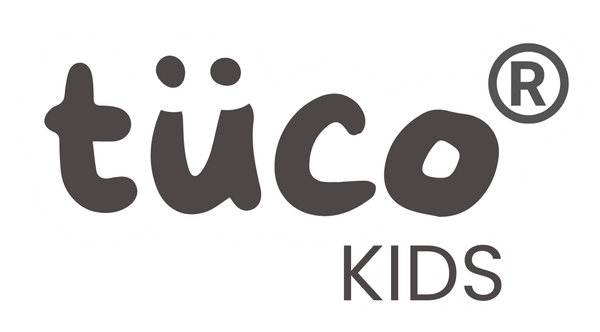
Why Do We Celebrate Navratri and Durga Pujo? Stories and Lessons for Kids
Festivals in India are more than celebrations; they are lessons in culture, values, and storytelling. For children, understanding the stories behind festivals like Navratri and Durga Puja makes the celebrations more meaningful. Parents can use these occasions to teach kids about goodness, courage, and devotion, while also keeping traditions alive in fun, child-friendly ways.
What is Navratri?
Navratri means “nine nights” and is celebrated across India to honor Goddess Durga and her nine forms. Each day is dedicated to one form of the goddess, symbolizing qualities like strength, kindness, knowledge, and protection.
Children often love the colorful traditions of Navratri:
-
Different colors worn each day.
-
Dancing garba and dandiya in Gujarat.
-
The Ram Lila plays in North India that retell the story of Lord Rama.
-
Durga Pujo celebrations in West Bengal with grand idols and cultural programs.
The Story of Goddess Durga and Mahishasura
One of the most important stories told during Navratri is about Goddess Durga and the demon Mahishasura.
Kid-Friendly Version:
“Imagine a brave superhero goddess with ten hands, each holding a weapon, riding a lion into battle. That’s Goddess Durga fighting to protect her people from evil Mahishasur!”
Once there was a demon named Mahishasura who became so powerful that no god could defeat him. He began troubling the heavens and the earth. To protect everyone, the gods combined their powers and created Goddess Durga — strong, brave, and shining with energy. Durga fought Mahishasura for nine days and nights, riding her lion and holding weapons in her many hands. On the tenth day, she defeated him, showing that good always triumphs over evil.
This victory of Goddess Durga is celebrated as Vijayadashami.
“Navratri teaches us that no matter how strong evil looks, goodness and courage always win.”
The Story of Lord Rama and Ravana
In many parts of India, Navratri also connects with the story of Lord Rama.
Kid-Friendly Version:
“Picture a brave prince with a shining bow and arrow, standing tall against a giant king with ten heads — that’s Lord Rama fighting Ravana to rescue Sita and show that good always wins over evil.”
Long ago, the demon king Ravana took away Sita, the wife of Lord Rama. Rama prayed to Goddess Durga during Navratri for strength and wisdom to fight Ravana. With the blessings of the goddess, Rama defeated Ravana on the tenth day.
That’s why Dussehra is celebrated with big fairs and the burning of Ravana’s tall effigies, reminding children that truth and courage win over lies and pride.
This victory of Lord Rama is celebrated as Dussehra
“Dussehra reminds us that truth and kindness always have the power to defeat pride and selfishness.”
For children, this can be turned into a fun activity: create a “color chart of nine days” and let them pick their outfits or accessories based on the color of the day.
Navratri Traditions in Gujarat
In Gujarat, Navratri is all about garba and dandiya, the famous group dances performed in circles with sticks and claps. Kids love this part of the celebration because it feels like a giant dance party.
Example for kids: Parents can explain, “Garba is danced in a circle to show how life moves in cycles: just like day and night, birth and growth, beginnings and endings.”
Even at home, families can play garba music, give kids colorful sticks, and let them try a few simple steps. This not only makes them enjoy the festival but also teaches the cultural importance of dance and community.
Durga Pujo Traditions in West Bengal
In West Bengal, the festival turns into Durga Pujo, a five-day celebration that brings entire communities together. Gigantic idols of Durga are placed in beautifully decorated pandals, and families spend evenings visiting them.
Example for kids: Tell them, “Durga Pujo is like inviting the goddess as a special guest to our home. We dress up, sing, dance, and offer her delicious food before she returns to her heavenly home.”
For children, a visit to pandals becomes a magical walk among colors, lights, and stories carved into decorations.
How to Teach Festival Values to Kids About Navratri and Durga Pujo
-
Use Stories: Narrate the tales of Durga vs. Mahishasura or Rama vs. Ravana in simple words.
-
Celebrate with Colors: Let kids wear the color of the day and explain its meaning (e.g., red for strength, yellow for joy).
-
Get Creative: Encourage kids to make small drawings of Durga, lions, or Ravana effigies.
-
Sing and Dance: Teach them simple garba steps or festive songs.
- Connect to Values: Remind them that festivals teach us to be brave, kind, and truthful
-
Most importantly give them hands on experience of it. Take them to garba/dandiya events. Take them pandal hopping around the city
This way, kids don’t just hear about the festival — they live it.
Gentle Care During Festivities
Festivals mean long nights of dancing, outdoor visits, and plenty of excitement. Children’s delicate skin may feel tired or dry during this time.
From daily baths to festive celebrations, Tuco Kids has everything your child needs; gentle soaps, lotions, shampoos, and oils crafted for ages 3–14. The range is made with child-safe formulas that care for delicate skin and hair.
Navratri and Durga Pujo are more than festivals; they’re stories of courage, goodness, and togetherness. By narrating these tales in playful ways, explaining the meaning behind colors, and celebrating with music and dance, parents can make these nine days unforgettable for their children. For kids, it becomes more than a cultural lesson — it’s an adventure they’ll look forward to every year.

